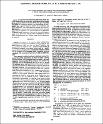The climate induced variation of the continental biosphere: A model simulation of the Last Glacial Maximum
| dc.contributor.author | Friedlingstein, P. | |
| dc.contributor.author | Delire, C. | |
| dc.contributor.author | Müller, J.F. | |
| dc.contributor.author | Gérard, J.C. | |
| dc.date | 1992 | |
| dc.date.accessioned | 2017-09-14T13:08:06Z | |
| dc.date.available | 2017-09-14T13:08:06Z | |
| dc.identifier.uri | https://orfeo.belnet.be/handle/internal/6257 | |
| dc.description | A simplified three‐dimensional global climate model was used to simulate the surface temperature and precipitation distributions for the Last Glacial Maximum (LGM), 18 000 years ago. These fields were applied to a bioclimatic scheme wich parameterizes the distribution of eight vegetation types as a function of biotemperature and annual precipitation. The model predicts a decrease, for LGM compared to present, in forested area balanced by an increase in desert and tundra extent, in agreement with a reconstruction of the distribution of vegetation based on paleodata. However, the estimated biospheric carbon content (phytomass and soil carbon) at LGM is less reduced than in the reconstructed one. Possible reasons for this discrepancy are discussed. | |
| dc.language | eng | |
| dc.title | The climate induced variation of the continental biosphere: A model simulation of the Last Glacial Maximum | |
| dc.type | Article | |
| dc.subject.frascati | Earth and related Environmental sciences | |
| dc.audience | Scientific | |
| dc.subject.free | climate induced variation | |
| dc.subject.free | climate model | |
| dc.subject.free | continental biosphere | |
| dc.subject.free | Last Glacial Maximum | |
| dc.source.title | Geophysical Research Letters | |
| dc.source.volume | 19 | |
| dc.source.issue | 9 | |
| dc.source.page | 897-900 | |
| Orfeo.peerreviewed | Yes | |
| dc.identifier.doi | 10.1029/92GL00546 | |
| dc.identifier.scopus | 2-s2.0-0026451540 |

